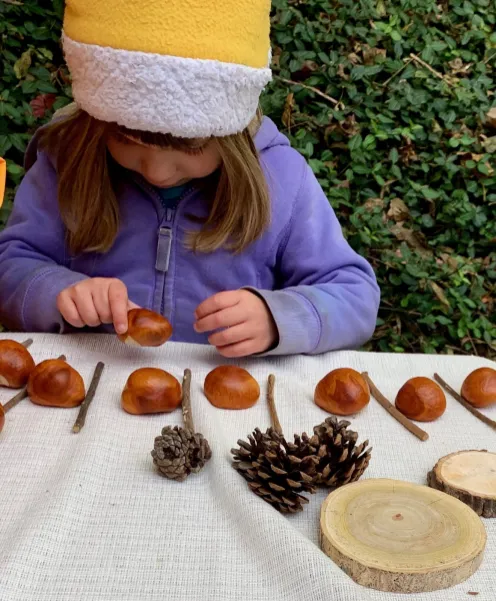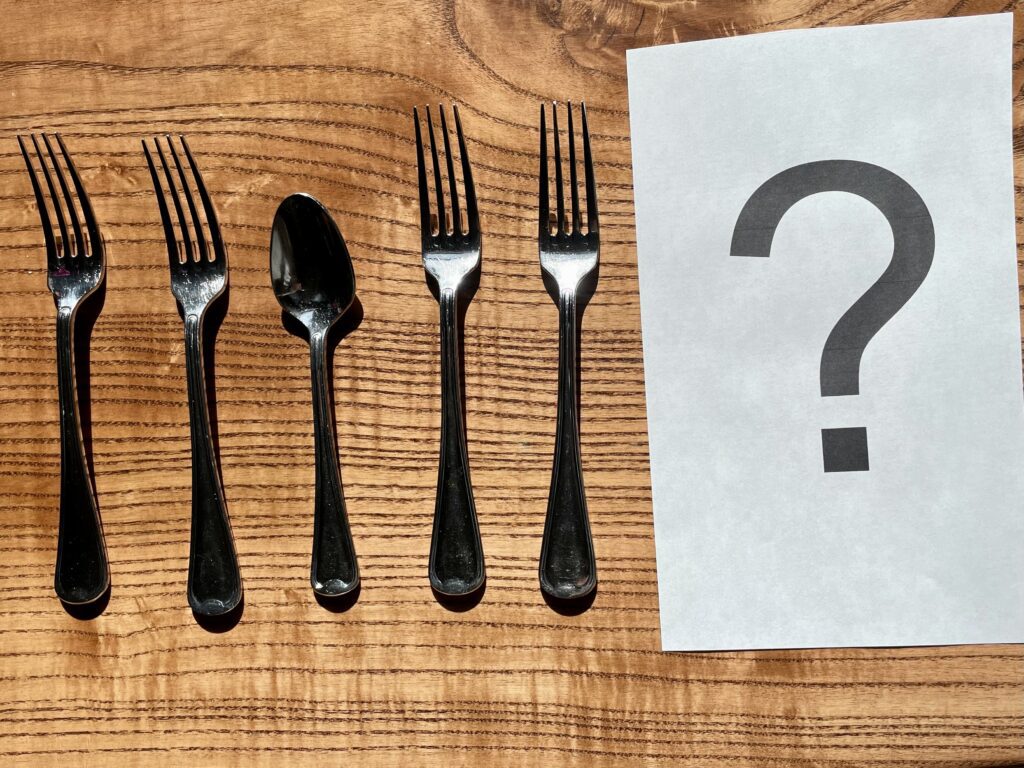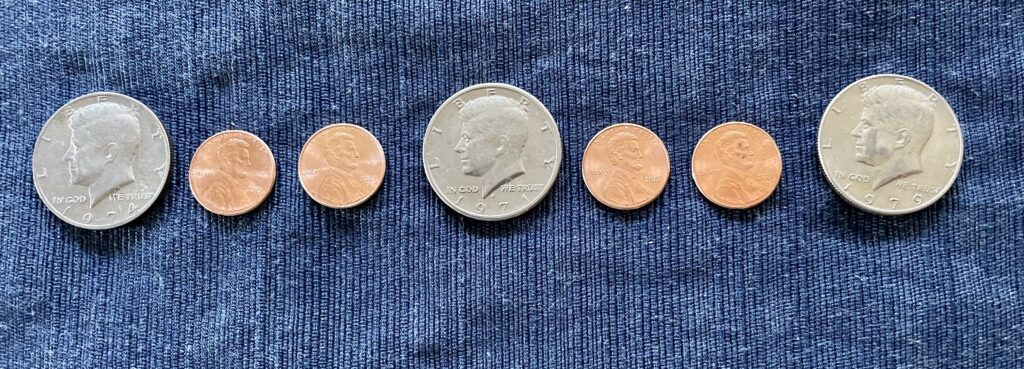Playing With Patterns

After a neighborhood nature walk, my early learners can't wait to play with the treasures they've collected.
Kindergarten readiness develops as children play with the objects that they find in their environments. Today, that play involves patterning.
Learning about patterns is a fundamental skill for all learning. Pattern play helps children develop their critical thinking, memory and problem-solving skills.
Patterning is a skill that children will practice quite a bit when they get to kindergarten. But you'll see all kinds of patterns emerge when younger children play with natural loose parts such as acorns or pine cones, as well as other objects such as toy cars, plastic dinosaurs or Legos.
Patterns are sequences that repeat. The human brain is wired to recognize patterns from birth onward. Patterns help infants make sense of the world, and pattern recognition helps children of all ages make predictions about what will come next.
Once children begin to spot patterns, they will see them everywhere in their surroundings, as well as in their daily routines.
Did you know that pattern awareness is a form of early algebraic thinking? How cool is that?
The ability to recognize patterns lays the foundation for later math learning. So let’s get started!

One of a child's earliest patterning activities is crawling and walking. Left-right, left-right, left-right is a pattern!
Remember playing “Head, Shoulders, Knees, and Toes” back in kindergarten? You were learning how to follow a pattern.
Research shows that music and math are intertwined in our brains from an early age. Songs and nursery rhymes are another great way to introduce patterns to children.
When playing with early learners, try this variation: "Head, shoulders, knees, and…..what comes next? Then ask: What comes after that?"
Teaching patterns is easiest if you model patterns first and then ask the children to copy them. Once children are confident that they can repeat your pattern, encourage them to lead or extend the pattern further.
Rhythmic body movements are another easy way to practice patterns. A clap-clap-clap of hands or stomp-stomp-stomp of feet will add to your early learners' math skills.
Pattern play helps children develop social skills as they gain an understanding of everyday sequences such as putting on coats first and mittens second before going outside or taking turns while playing a game.
The simplest way to work with patterns is to use real objects. The possibilities are endless! When setting the table or waiting for your food at a restaurant, use forks and spoons to create patterns.
Keep it simple by starting with two objects and adding more as patterning skills develop.

This easiest pattern is the ABAB pattern: fork spoon, fork spoon . . . fork _______. What comes next?
As children learn how to create patterns in a sequence from left to right, they are building the foundation for later reading and writing. By the time they begin to read and write sentences, the left-to-right reading and writing patterns will come naturally.
You can then introduce the AAB pattern: fork, fork, spoon . . . fork, fork ________. What comes next?

Keep an eye out for clothing or toys that have patterns, and point out patterns in the environment such as patterns on wallpaper and or on bathroom tiles.

Coin pattern play can help you pass the time when waiting for an appointment. It's also a good way to distract hungry kids until their food comes at a restaurant.
Just pull out some pennies, nickels, dimes, and quarters and let the patterning begin!
You don’t need to spend money on patterning games, pattern blocks or pattern cards. Just look around and use what you have. On your next walk, grab some leaves, rocks, acorns, or sticks and create some beautiful patterns with nature's bounty.
Kids learn through play, and this is just one more example of how fun and easy learning can be!